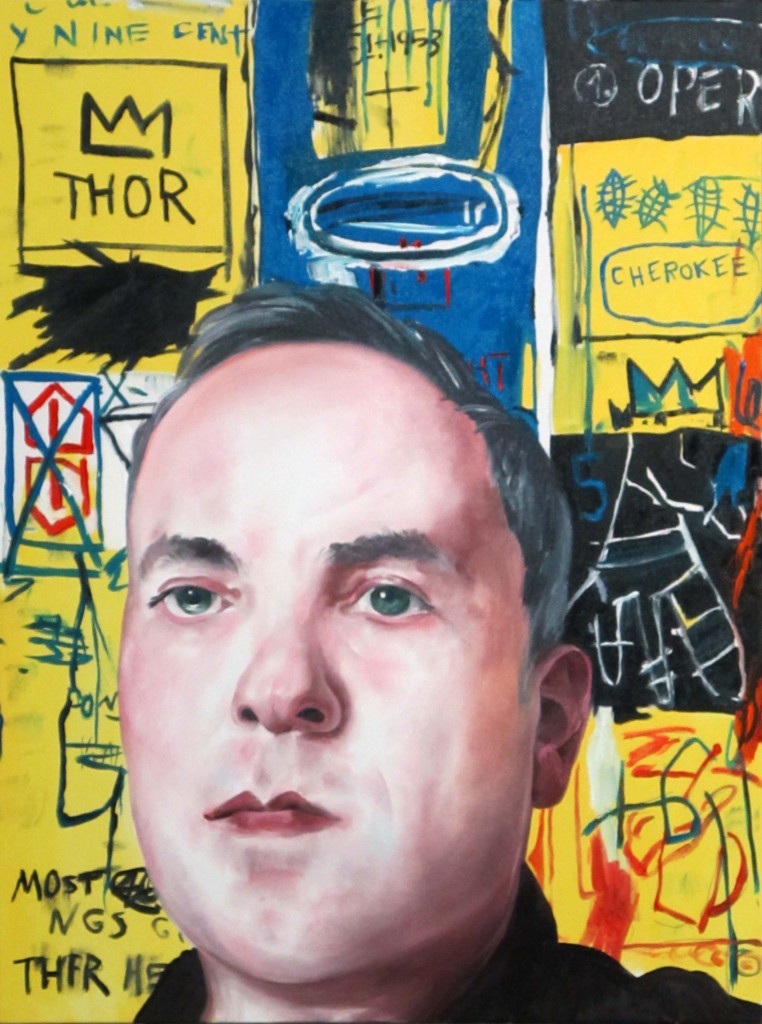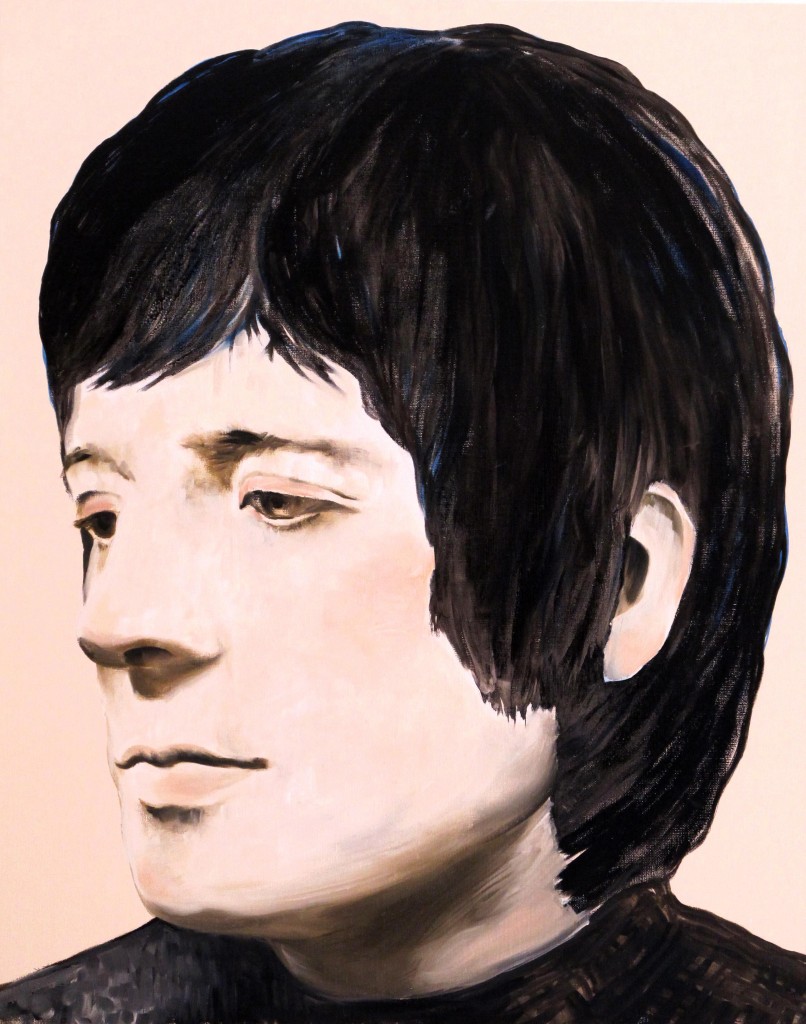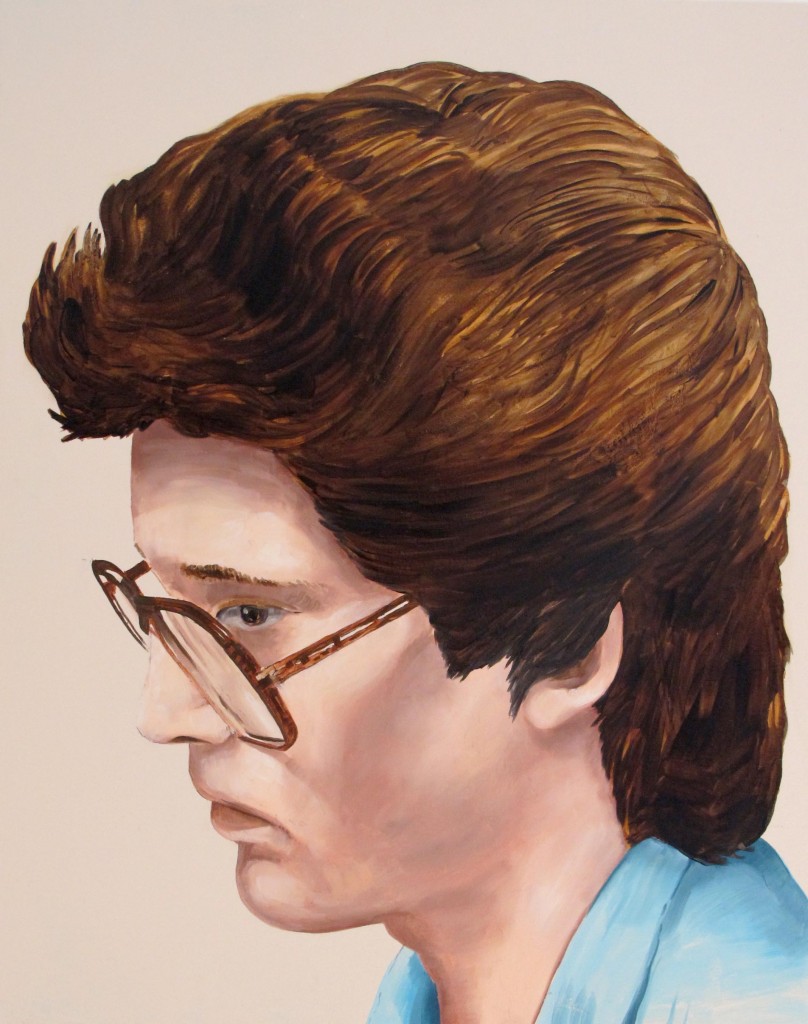You could say we’re in an artsy mood. We sat down with another visual artist, Noah Becker, whose show is currently at the Lodge Gallery on Chrystie Street, to talk about portraiture and the state of contemporary art. Becker isn’t only a painter, though — he also plays the saxophone professionally and is the editor-in-chief of WhiteHot magazine, a publication focusing on the contemporary art scene. When asked about the multiple pools into which he has his toes dipped, Becker refers to the “Warholian model of not being just one thing” — read on to find out exactly what that means.
TBQ: You’re known for portraits. How’d you get into that?
Noah Becker: Well, I like the figurative aspect of portraits. I like portraits that are valuable contemporary art, but they’re not just something to hang over the fire place. They could also be in a museum context.
TBQ: Are there conventions of portraiture you don’t follow?
NB: I think when I have multiple figures in one frame, it’s a mash up; it’s a collage thing where there are different elements, and it doesn’t represent a known person or someone who specifically posed for a portrait. It starts to move outside of portraiture. But a lot of the paintings that I do are of anonymous people, and they’re still portraits, they’re just portraits of unknown subjects.
TBQ: How do you find the subjects?
NB: Well, in the case of these paintings, they’re British hair models from vintage photo sources, from like ‘60s and ‘70s—so they’re actually amateur models posing with perfect hair, and I think that that also goes against the definition of portrait painting, because it’s, they’re not posing proudly for the camera or being idealized, but they’re just kind of awkward.
TBQ: They almost look like they were caught off guard, which of interesting when you think of the conventions of portraiture, Kings staring proudly… These people seem to have a lot less agency. There’s no gaze back at the viewer.
NB:I got to the point where I realized that technique is not necessarily what art is about, but I enjoyed using the technique that I learned, so how do I use the technical skill I have for two dimensional, illusionary realism and still present contemporary art? That’s the question. Because you get pushed into this traditionalist genre, especially if you’re doing portraits.
TBQ: Do you ever imagine them as having inner lives?
NB: I think you’re giving them an emotional life, or you’re making them look completely like soulless, but either way, there’s something really strong happening there, whereas I think traditional portraiture tries to aim for something very middle ground.
TBQ: What draws you to this type of work?
NB: I think I’m drawn to the idea of trying to make something alive with an inanimate material, the magic that could be instilled in something that’s inanimate.
TBQ: Another thing that I think is really interesting about these works is that you kind of purposely chose people that, because of the way they’re dressed and their hair, they look kind of dated.
NB: Right. There is that overlap between current styles and older styles, but also, the idea of making something that looks like it’s 30 or 40 years old already as opposed to making something that is supposed to represent what’s new.
TBQ: What about these series of paintings that directly reference other artists?
NB: Well, these are directly relating to the selfie. Also, it’s a way of entering the canon deliberately instead of waiting for something that you’ve done to enter the canon accidentally. It’s also a commentary on the way that big value art and blue-chip art seems to be what draws most of the collectors in now, almost like they are losing their ability to engage with something new.
TBQ: Why did you choose these specific artists [Basquiat, Warhol and Lichtenstein]?
NB: This was a reaction to Gagosian Gallery not allowing us to take photos of their Basquiat retrospective. I thought, “Wouldn’t it be interesting to just make a painting of myself standing in front of the painting and it would be much more permanent?” I think it’s indicative of the digital age and the kind of photographic Wild West that goes on.
TBQ: Do you have an ideological underpinning to your work?
NB: I want [viewers] to experience a certain amount of mastery, but at the same time, I want to present contemporary art. The challenge is how to make the technique be at the service of the idea. Since the digital age started and everybody’s taking selfies and everybody’s using big digital cameras, everybody seems to be a photographer or an artist of some kind, even if they’re not — that rate and that number of people who are sharing their visual ideas has exploded in the last 10 or 15 years. So I think authenticity is being challenged.
TBQ: Do you think that the proliferation of technology that makes art really ubiquitous is kind of denigrating it, or cheapening it?
NB: I think it’s making it harder to do good work, because there’s more people who can satisfy the average person’s taste with something that uses a $5 to 15,000 camera or whatever it is. I think equipment is starting to kind of trump certain people’s expectations of what something that’s great is supposed to be. I’d like to react to some of these changes in painting, but without conforming to it in a way that makes my work too involved with it in a way that undermines the quality of what I’m doing.
TBQ: What’s the best compliment you’ve ever gotten on your art?
NB: Showing in museums.
TBQ: You’re also a successful jazz musician. Do you ever find that your music is influencing your painting, or vice versa?
NB: I haven’t gone that far into it, but certainly there are shapes and geometries in music that relate to the same kind of shape and mathematical geometries that are found in painting.
TBQ: Do you get something different from music and from painting?
NB: I like the relaxation of painting. With music, it’s interactive, and the performance is dependent on other people playing with you. As a person who’s not always the biggest people person, I enjoy the solitude.




